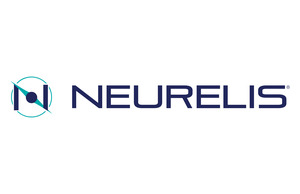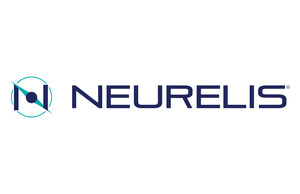Data presented will include: SEIzure InterVAL (SEIVAL), the time between clusters
Association between time to treatment and associated seizure cessation and duration
SAN DIEGO, Aug. 31, 2023 /PRNewswire/ -- Neurelis, Inc. will present additional clinical findings from the completed long-term, open-label, repeat-dose safety study of VALTOCO for the treatment of episodes of frequent seizure activity (i.e., seizure clusters) in people with epilepsy for ages 6 to 65 at the 35th International Epilepsy Congress (IEC) in Dublin, Ireland, September 2 to 6. The congress is organized by the International League Against Epilepsy (ILAE) and International Bureau for Epilepsy (IBE).
"Despite availability of chronic, daily oral medications to help control seizures, many patients continue to experience acute repetitive seizures," said Adrian L. Rabinowicz, M.D., Neurelis Chief Medical Officer. "The clinical evidence presented at IEC further supports the utility of VALTOCO in acute seizure management to minimize the potential negative consequences of seizure clusters and have meaningful impact for people with epilepsy."
Following are the presentation details, which also are available on the ILAE website:
- Faster Time to Treatment of Seizure Clusters with Diazepam Nasal Spray Is Associated With Faster Cessation of Clusters: A Post Hoc Analysis; Sunday, September 3rd, 3:50 PM - 4:00 PM ET
In this post-hoc analysis of a long-term, open-label, repeat-dose safety study of diazepam nasal spray, seizure cluster data were analyzed based on timing of treatment administration after seizure start. These data demonstrate that more rapid administration of diazepam nasal spray following the start of a seizure cluster was associated with more rapid seizure cluster cessation and overall shorter seizure duration. - Significant Improvements in SEIzure InterVAL (Time Between Seizure Clusters) Across Time: Post Hoc Analysis of a Long-Term, Open-Label Safety Study of Diazepam Nasal Spray; Available Online, August 4, 2023, until December 6, 2023
This post-hoc analysis of data from a long-term, open-label, repeat-dose safety study of diazepam nasal spray was undertaken to explore SEIzure interVAL (SEIVAL; time between seizure clusters) as a novel metric to assess the effectiveness of seizure-cluster rescue therapies across multiple days. These data demonstrate that over a 12-month period, a statistically significant increase in the time between seizure clusters was observed with administration of diazepam nasal spray. This change in SEIVAL appears to be independent of age or changes in concomitant ASDs and may reflect a beneficial effect of intermittent rescue therapy with diazepam nasal spray.
VALTOCO, a nasal spray for acute treatment of episodes of frequent seizure activity in adult and pediatric patients 6 years of age and older, was approved by the U.S. Food and Drug Administration (FDA) on Jan. 10, 2020. Later that year, the FDA granted VALTOCO Orphan Drug Exclusivity, stating its intranasal route of administration as clinically superior to the previously approved standard-of-care treatment (DIASTAT®, a rectal gel formulation of diazepam).
About Neurelis
Neurelis, Inc., is a neuroscience company focused on the development and commercialization of therapeutics for the treatment of epilepsy and orphan neurologic disorders characterized by high unmet medical need. In 2020, the FDA approved Neurelis' VALTOCO® (diazepam nasal spray) as an acute treatment of intermittent, stereotypic episodes of frequent seizure activity (i.e., seizure clusters, acute repetitive seizures) that are distinct from an individual's usual seizure pattern in adult and pediatric patients 6 years of age and older. VALTOCO is a proprietary formulation of diazepam incorporating the science of INTRAVAIL®. Intravail's transmucosal absorption enhancement technology enables the noninvasive delivery of a broad range of protein, peptide and small-molecule drugs. In its approval of VALTOCO, the U.S. Food and Drug Administration also granted Neurelis Orphan Drug Exclusivity and recognized VALTOCO's intranasal route of administration as a clinically superior contribution to patient care over the previously approved standard-of-care treatment (a rectal gel formulation of diazepam). For more information on VALTOCO, please visit www.valtoco.com. In addition, Neurelis is developing NRL-1049 (previously known as BA-1049), an investigational, Phase I stage small molecule Rho kinase (ROCK) inhibitor, for the treatment of cerebral cavernous malformations (CCMS), a rare disorder of the central nervous system (CNS). For more information on Neurelis, please visit www.neurelis.com. For the latest scientific information on VALTOCO, please visit http://www.neurelismedicalaffairs.com/.
Important Safety Information about VALTOCO:
Indication
VALTOCO® (diazepam nasal spray) is indicated for the acute treatment of intermittent, stereotypic episodes of frequent seizure activity (i.e., seizure clusters, acute repetitive seizures) that are distinct from a patient's usual seizure pattern in patients with epilepsy 6 years of age and older.
WARNING: RISKS FROM CONCOMITANT USE WITH OPIOIDS; ABUSE, MISUSE, AND ADDICTION; and DEPENDENCE AND WITHDRAWAL REACTIONS
|
Contraindications: VALTOCO is contraindicated in patients with:
- Hypersensitivity to diazepam
- Acute narrow-angle glaucoma
Central Nervous System (CNS) Depression
Benzodiazepines, including VALTOCO, may produce CNS depression. Caution patients against engaging in hazardous activities requiring mental alertness, such as operating machinery, driving a motor vehicle, or riding a bicycle, until the effects of the drug, such as drowsiness, have subsided, and as their medical condition permits.
The potential for a synergistic CNS-depressant effect when VALTOCO is used with alcohol or other CNS depressants must be considered, and appropriate recommendations made to the patient and/or care partner.
Suicidal Behavior and Ideation
Antiepileptic drugs (AEDs), including VALTOCO, increase the risk of suicidal ideation and behavior. Patients treated with any AED for any indication should be monitored for the emergence or worsening of depression, suicidal thoughts or behavior, and/or unusual changes in mood or behavior.
Glaucoma
Benzodiazepines, including VALTOCO, can increase intraocular pressure in patients with glaucoma. VALTOCO may only be used in patients with open-angle glaucoma only if they are receiving appropriate therapy. VALTOCO is contraindicated in patients with narrow-angle glaucoma.
Neonatal Sedation and Withdrawal Syndrome
Use of VALTOCO late in pregnancy can result in sedation (respiratory depression, lethargy, hypotonia) and/or withdrawal symptoms (hyperreflexia, irritability, restlessness, tremors, inconsolable crying, and feeding difficulties) in the neonate. Monitor neonates exposed to VALTOCO during pregnancy or labor for signs of sedation and monitor neonates exposed to VALTOCO during pregnancy for signs of withdrawal; manage these neonates accordingly.
Risk of Serious Adverse Reactions in Infants due to Benzyl Alcohol Preservative
VALTOCO is not approved for use in neonates or infants. Serious and fatal adverse reactions, including "gasping syndrome," can occur in neonates and low-birth-weight infants treated with benzyl alcohol–preserved drugs, including VALTOCO. The "gasping syndrome" is characterized by central nervous system depression, metabolic acidosis, and gasping respirations. The minimum amount of benzyl alcohol at which serious adverse reactions may occur is not known.
Adverse Reactions
The most common adverse reactions (at least 4%) were somnolence, headache, and nasal discomfort.
Diazepam, the active ingredient in VALTOCO, is a Schedule IV controlled substance.
To report SUSPECTED ADVERSE REACTIONS, contact Neurelis, Inc. at 1-866-696-3873 or FDA at 1-800-FDA-1088 (www.fda.gov/medwatch).
Please read full Prescribing Information, including Boxed Warning.
Contacts:
Neurelis:
Brittany Bradrick, Chief Operating Officer and Chief Financial Officer, +1 858 251 2135
Media:
Glenn Silver, FINN Partners, +1 646 871 8485
SOURCE Neurelis, Inc.

WANT YOUR COMPANY'S NEWS FEATURED ON PRNEWSWIRE.COM?
Newsrooms &
Influencers
Digital Media
Outlets
Journalists
Opted In






Share this article